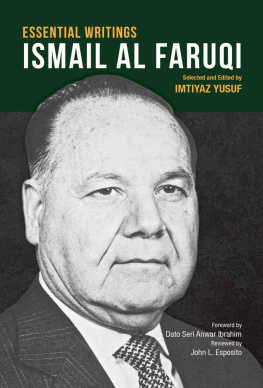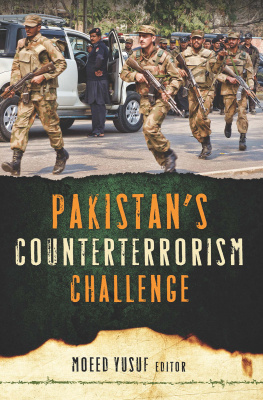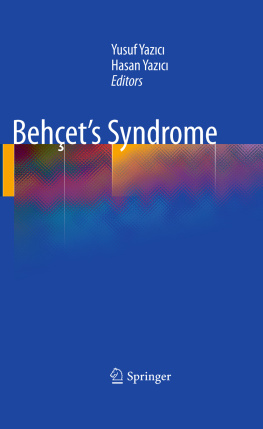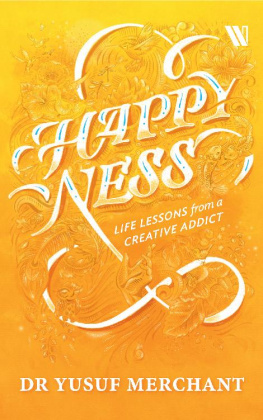Emerald Publishing Limited
Howard House, Wagon Lane, Bingley BD16 1WA, UK
First edition 2019
Copyright 2019 Emerald Publishing Limited
Reprints and permissions service
Contact:
No part of this book may be reproduced, stored in a retrieval system, transmitted in any form or by any means electronic, mechanical, photocopying, recording or otherwise without either the prior written permission of the publisher or a licence permitting restricted copying issued in the UK by The Copyright Licensing Agency and in the USA by The Copyright Clearance Center. Any opinions expressed in the chapters are those of the authors. Whilst Emerald makes every effort to ensure the quality and accuracy of its content, Emerald makes no representation implied or otherwise, as to the chapters suitability and application and disclaims any warranties, express or implied, to their use.
British Library Cataloguing in Publication Data
A catalogue record for this book is available from the British Library
ISBN: 978-1-78756-666-8 (Print)
ISBN: 978-1-78756-663-7 (Online)
ISBN: 978-1-78756-665-1 (EPub)
PREFACE
The Arab Spring was not about women or their rights. When Bouazizi set himself on fire in protest, he was not campaigning for more rights for women. He was culminating a life full of suffering and economic shortages. First, and foremost, these were uprisings by the youth and the marginalized members of society looking for better economic opportunities. Yet, it was not all about economic wellbeing; the protesting young Arab people saw a connection between their dismal situation and the quality of governance in their countries. It is true that Arab countries are not the same, as diverse recent historical experiences have often out-powered the impact of geographic proximity and common language. Yet, differences on the outside among Arab countries hid a well-known reality. In most cases, Arab countries had been governed by tightly controlled authoritarian systems, embodied in the rule of a traditional leader, a tribe, or a deeply entrenched family. The common fabric among all those countries was that people had little to say in how they run their affairs.
The depth of authoritarianism had been striking. In some cases, rulers drew their legitimacy from a religious discourse that supports the ruler, even when he transgresses the rights of others. The rationale behind this is that an unjust authoritarian ruler who is able to bring order to society is better than a democratic ruler governing in a chaotic environment. Under such understanding, a revolution is looked upon as a threat, as a danger that must be avoided. The authoritarian ruler becomes the lesser of the two evils whose powers are uncontested.
In other cases, authoritarianism was legitimized by the presence of a deeply rooted one-party system whose sustained rule was taken for granted, without a question or a second thought. In a country like Syria, in 2011, most Syrians had never lived under a different system other than the Baath Party rule. In other situations, deeply rooted societal divisions made the presence of a leader, the qaed or the zaim, an unquestioned necessity. Societal divisions occurred not only between the rich and the poor but also the religious and non-religious, the Islamists and seculars, my tribe and your tribe, my family and your family. Rulers become saviors, guardians, and protectors amid all of that chaos.
No wonder that most Arab newspapers bear the picture of the leader on their front pages every day. Daily news reports start, not with updates about the flood in a nearby city, nor by the grand fires that consumed a whole neighborhood, but with broadcasts about the leaders daily routine, who visited him and what did he do during his workday. The country becomes the country of the leader. His authority, his power and significance, and the need of the people to his wisdom and compassion are persistently reinforced.
All of this changed on that day when Bouazizi, and the people of Tunisia, had enough. People in Egypt, Syria, and Yemen followed suit, deciding that enough is enough, and the Arab Spring was born. The Spring was viciously fought, and many of the initial accomplishments and successes were then backtracked. Years later, when many thought that the Arab Spring has for all practical purposes ended, people in Algeria and Sudan took down to the streets reviving the early days of the revolutions that happened elsewhere in the Arab world. The common fabric among all those movements was economic deprivation, disempowerment, lack of opportunities, and a desire for a better future.
The uprisings were not about more opportunities specific for men or for women; these were uprisings demanding rights and opportunities for all. Yet, for women of the Arab Spring, the uprisings presented a rare moment in time to let themselves be heard. If one is to identify a marginalized sub-stratum of society, women would be the first to be picked. It is true that many young men are unemployed, yet what is also true is that many more young women are unemployed. While it is true that many more women are getting educated, what is strikingly true is that education does not seem to make a difference in terms of giving them more access to economic opportunities. The more educated they become, the more frustrated they end up becoming. While most men are excluded from decision-making opportunities at higher levels in the political and economic scenes, women are basically excluded altogether from the political arena. Moreover, their presence in the upper echelon of economic institutions is rare, sporadic, and unexpected.
It was an opportunity of a lifetime. Millions of young men and women who took down to the streets aspired for a better future for all. They did not have a clear political agenda, and they came from various backgrounds. Some of them were deeply religious and some were not. Some were Muslims; others were Christians. Yet, they were unambiguous about one thing: things had to change. The slogan by which those uprisings went was People want a regime change. The young were uninhibited by past stories of failed uprisings or unfulfilled hopes. There seemed to be one primary demand for those uprisings: a total and uncompromising change in current establishments. Women of the Arab Spring realized, without premeditated plots, without organizing, that their new emancipation required, beforehand, the emancipation of everybody. Perhaps, if the rights of all marginalized classes of society are fulfilled, women will get their share.
In full force, women participated. One could not miss the young women, many of whom wore the veil, but many did not. They stood steadfast in Tahrir Square in Cairo before and after the January 25th revolution. It was easy to spot the deeply religious women of Damascus and Homs, together with their more liberal sisters, chanting songs of freedom and hope, raising their voices in totally unprecedented waves People want a regime change. In Yemen, where women score the lowest in terms of several gender indicators, many young female activists were among the leaders of the early protests.











